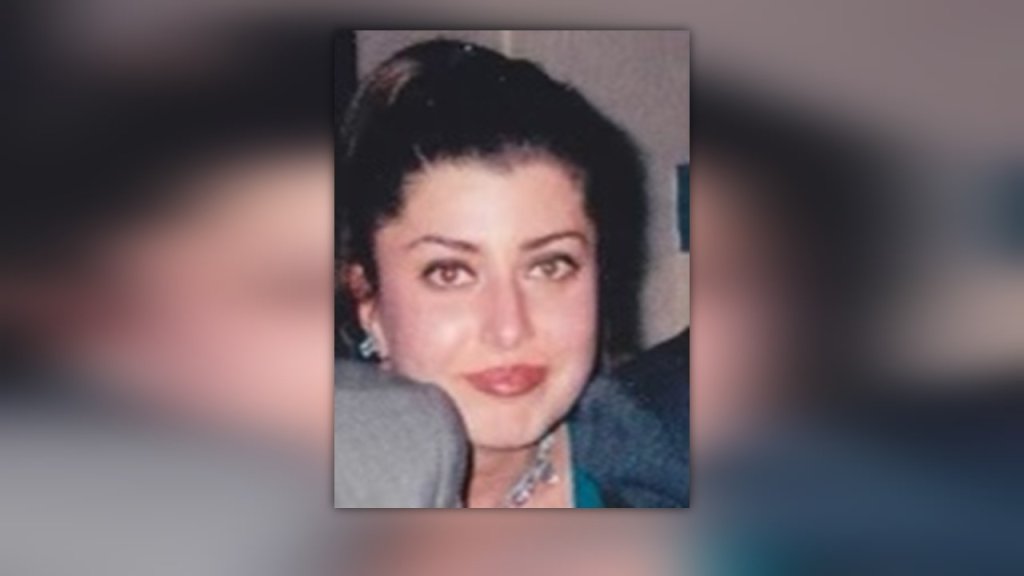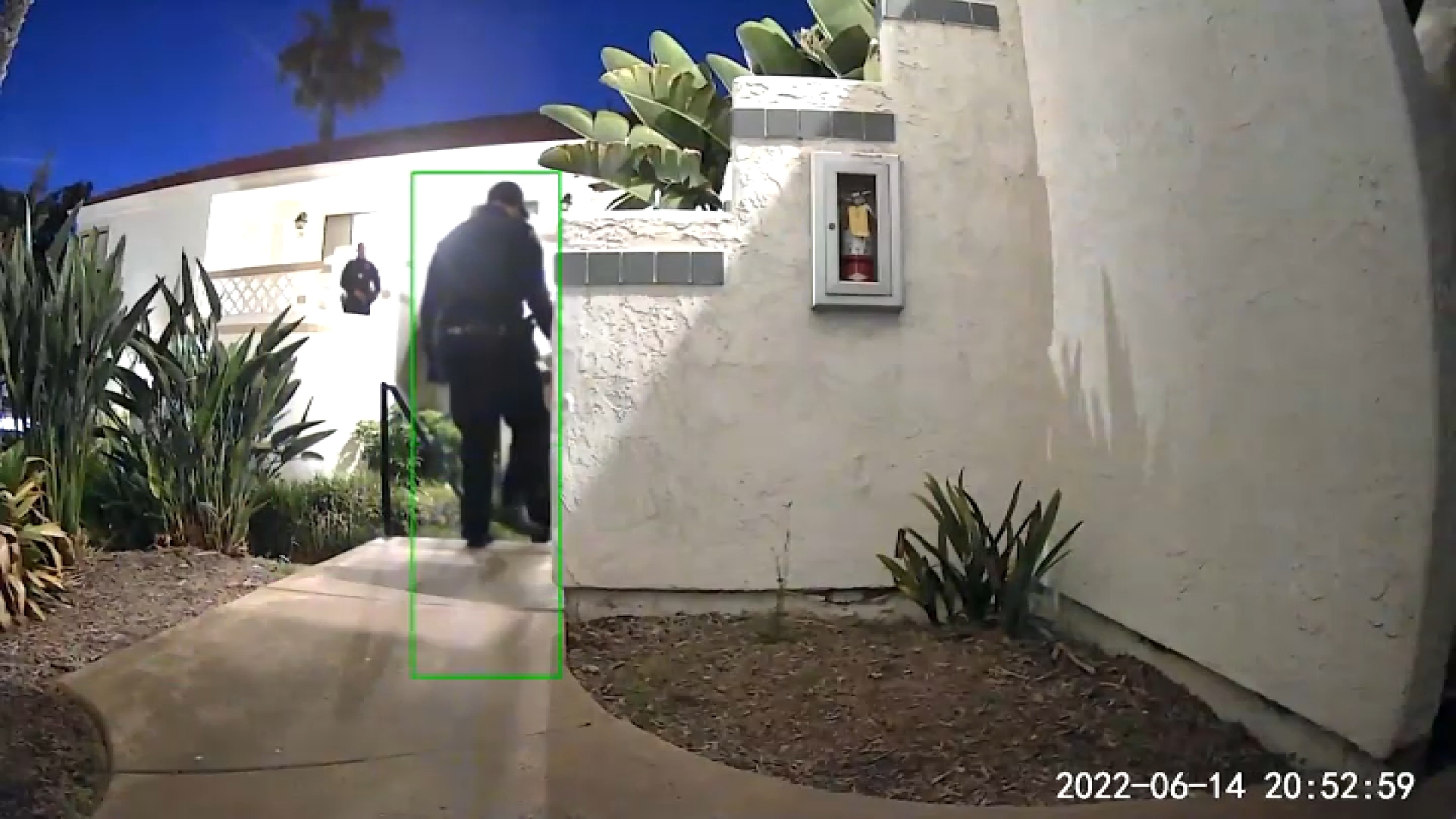
Wilted flowers mark the outdoor staircase leading up to the condo where police say a San Diego man murdered Connie Dadkhah, 45. That man, Parrish Chambers Jr., 44, is now sitting in a jail cell without bail awaiting trial for murder.
Yet three of Connie’s neighbors who spoke with NBC 7 Investigates feel police deserve some of the blame.
“Had they just done their job, she would still be alive,” said Michelle.
“It’s incredibly upsetting,” said Mike. “It’s really unbelievable. Very, very scary.”
“I just feel such a strange combination of anxiety and anger and sadness,” said Sally. “It could have been prevented.”
In order to protect their identities, NBC 7 Investigates is using fictitious names for the neighbors.

“Had they just done their job, she would still be alive.”
Michelle

Officers found Connie’s lifeless body inside her condo Wednesday morning, June 15. But neighbor interviews, dispatch records, 911 call timestamps and surveillance video all gathered by NBC 7 Investigates show the calls for help started nearly 12 hours earlier.
Around 7 p.m. the night before two neighbors called 911 reporting a man banging on Connie’s door and screaming. Over the next hour, at least five more calls rolled into 911, but no officers were dispatched. Then, just after 8 p.m., neighbors heard and saw something that prompted dispatchers to speed up the police response.
“He somehow managed to climb onto her balcony and break through her glass door. So he broke in,” said Sally.
“I told them [police] that there is an active burglary happening to my neighbor’s house,” said Michelle. “I’m looking at him through the window. He entered through the second-story sliding glass door, he busted the door.”
Sally told NBC 7 Investigates she was still on the line with the dispatcher when she heard a physical fight.
“I’ve never heard somebody that angry in my entire life,” said Sally. “He was running so hard that I genuinely thought he might break through the ceiling. I remember saying verbatim, ‘He’s going to kill her.’”
At that point, dispatch records show the call was upgraded to a higher priority, and officers started staging at a parking lot nearby. About 45 minutes later, they arrived at Connie’s condo and knocked on the door.
“They finally show up,” said Michelle. “They’re walking up and I’m noticing them looking around and I come out of my door and I point to the unit and I say he’s in there, and they just nodded their heads. So they flashed their light, they could totally see the broken glass.”
Police say officers tried calling Connie’s phone and looked for her car. But since Connie didn’t answer the door, officers ultimately left.
“At this point, I'm like what is going on?” said Michelle. “Where are they going? What’s happening? You have no idea what he’s going to do. He can easily break into someone else’s home. Especially on the first floor if he got into the second floor. And I was thinking why is it not an emergency? Why are they just walking away?”
The next morning, just before 8:30 a.m., police say Chambers came outside and told a neighbor to call 911 because Connie was dead. Surveillance video obtained by NBC 7 Investigates shows officers arresting Chambers minutes later.
NBC 7 Investigates has learned this is not the first time police have been called to Connie’s home. In fact, Chambers was not even supposed to be near Connie. A judge ordered Chambers to stay away from Connie as one of his probationary terms for a vandalism conviction in 2020.
“The victim in that case was actually the victim of the homicide as well,” said the prosecutor during Chambers’ preliminary hearing.
“I was just overcome with grief,” said Shannon Jones.
Jones says Connie meant a lot to him over their 15-year-long friendship. At one point the two even dated.
“Just devastated,” Jones said. “She was one of the closest people in my life.”
While he may be devastated, Jones told NBC 7 Investigates he wasn’t totally surprised to hear about her murder. Unfortunately, Jones says her alleged killer was no stranger to Connie, him or the police.
“He was a stalker, and a user, and an abuser,” said Jones.
Jones shared cell phone video with NBC 7 Investigates, taken back in October 2020. In the video, he claims Connie called him to help get Chambers out of her apartment.
Jones said Chambers met Connie through her volunteer work with mental health outreach, became smitten with her, tracked down her address, and constantly visited despite repeated requests that Chambers leave her alone. Both Jones and a neighbor told us Chambers occasionally assaulted Connie, and the times that police were called, he wasn’t arrested.
“It had been going on for a year and a half, almost two years,” said Jones. “And it was all her responsibility to make it stop. That’s the way they made it seem.”
Lt. Steven Shebloski with the San Diego Police Homicide Unit told NBC 7 Investigates that the officers who responded last month upheld their oath to protect Connie.
“They were making the best decision they had based on the information at the time,” said Shebloski. “And, at the end of the day and the following day, did a tragedy happen? Absolutely, but I don't think that’s because of the officers’ response.”
He says no officers were dispatched in the first hour because the calls were initially categorized as a lower priority event.
POLICE RESPONSE TIMELINE:
“Unfortunately those calls can stack in terms of time of dispatch to the time of response,” said Shebloski.
But remember, even after dispatchers upgraded it to a higher priority, it still took officers another 45 minutes to knock on the front door.
“In this case, officers had information on that particular address involving the male that lived there, or at least their impression of the male that lived there,” said Shebloski when asked why it took so long for officers to arrive. “So one of the things they did is that they had a meeting beforehand to have resources in place, especially less lethal options, in order to contact the person that lived there in a safe manner.”
When asked why officers didn’t go inside the unit, Shebloski said that officers couldn’t verify a disturbance was taking place, didn’t hear anything and didn’t see anyone.
The lieutenant went on to say, “There was a reasonable interpretation that this man lived there.” Shebloski describes a confidential police record known as a Prior Activity Code (PAC) file which gives responding officers a history or notes about the address they are being dispatched to. He says that file indicated that Chambers had been contacted there before.
After NBC 7 Investigates broke this story, we continued to push SDPD for more answers about that PAC file. Ultimately, police agreed to unredact part of the PAC file from a Call For Service report we had obtained. That report was from an incident on April 22 between Chambers and Connie.
It says the following: “If CFS (Call For Service) comes out with this address, have three (3) officers, a SGT, and a K9 respond.”
It then mentions Parrish Chambers by name, and includes redacted information about his criminal history. Police tell us the mention of Chambers in the address history is what led officers to believe he lives there, even though it does not explicitly state he is a resident.
“When you’re going to force entry into someone’s home, that is the highest level of legal standard we operate under,” said Shebloski. “So you have to be on point legally and tactically. Because if officers go in and make the wrong decision on a poor guy that left his keys in there and broke into his own house and a significant use of force, or God forbid officers use deadly force, there is going to be a lot of hard questions asked of that supervisor and those officers.”
The officers responding on June 14 would not have seen any of the other information included in that April 22 report. That included officers telling dispatch there were visible injuries on Connie, that there was no prior domestic relationship with Chambers, and that she did not want to pursue charges against him. Officers advised her to lock all her doors and call police if he came back. That same report ends with officers explicitly telling dispatchers that Chambers does not live at her address.
Police also say officers would have had the ability to run a criminal background check on Chambers and also pull information that could have revealed his court order to stay away from Connie. However, they say it’s unclear if officers conducted those checks.
While Shebloski stands with the officers who responded that night, he says he can understand the community’s concerns.
“The people who called in, they did everything right,” said Shebloski. “They called 911. They repeatedly called back. They did everything right. I understand why people are upset. The chief understands why people are upset. That is not lost upon us and our thoughts and prayers are with the family.”
While Shebloski says officers “get it right” the vast majority of the time, he says the chief’s office is now reviewing the police response in this incident. He says that’s standard in “critical incidents.”
“It felt awful,” said Sally. “I was on the phone with the police. They were not showing up. I was literally hiding in a closet panicking for her safety as well as my own safety.”
Back in Rancho Penasquitos, neighbors tell us if there’s a next time, they’re not sure they should bother to call 911.
“I have zero confidence in the police,” said Sally. “This has taught me I need to take my safety into my own hands. Truly I feel like the police are not here for me, are not here to help.”
“I’m very angry,” said Michelle. “How do I know they’re going to be here for me if I need to call them? How do I know they’re going to be here for my children if they need to call them? How can I trust that?”
“It felt awful. I was on the phone with the police. They were not showing up. I was literally hiding in a closet panicking for her safety as well as my own safety.”
Sally
While they believe Connie would still be alive if the police responded differently, they hope in death, her case can prompt change.
“Her compassion and empathy was limitless,” said Jones. “She was one of the most beautiful and innocent souls I’ve ever known.”
The county still hasn’t released Connie’s cause of death.
In the meantime, Chambers has pleaded not guilty and is locked up without bail. He is scheduled to be back in court in mid-August. NBC 7 Investigates reached out to Chambers and his defense attorney. That public defender told us in an email “...being charged with a crime is not evidence that a crime that actually committed, and Mr. Chambers is presumed innocent at this point in the litigation.”
Public records obtained by NBC 7 Investigates showed other police calls placed around the time of Connie’s murder. Seven of the 10 officers that ultimately responded were at a suicide call from roughly 7 to 8 p.m. And two of the other officers were working a road rage incident before they all started staging to respond to Connie’s condo at 8 pm.
However, regardless of what else may have been going on that night, dispatchers initially assigned this as a Priority 2 call which has a response time standard of 27 minutes. About an hour later it was upgraded to a Priority 1 call, which has a response time standard of 14 minutes. Police failed to meet both standards.
The graphic below shows the goal times for all the types of priority callouts, and the actual performance of San Diego police in FY2021.

